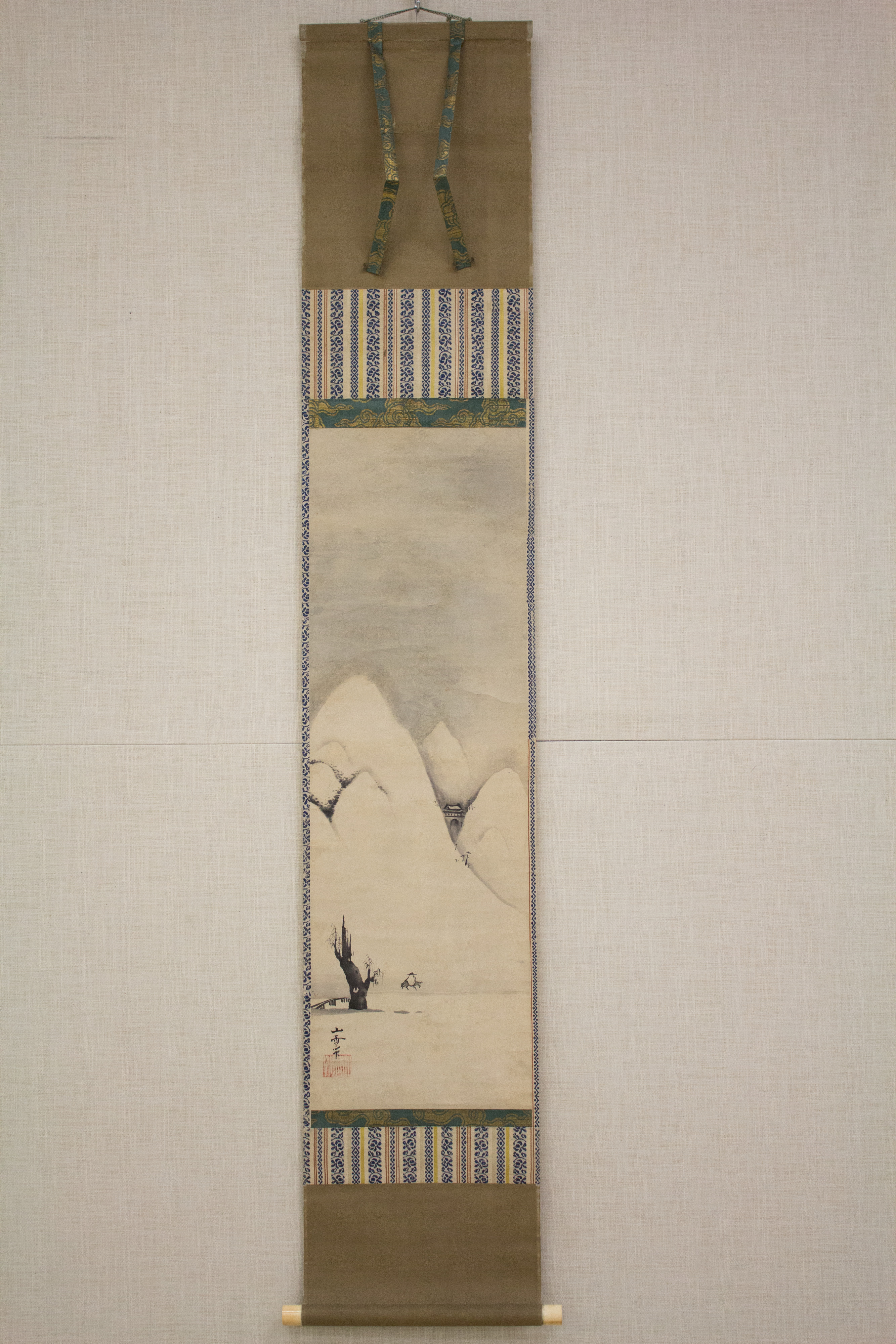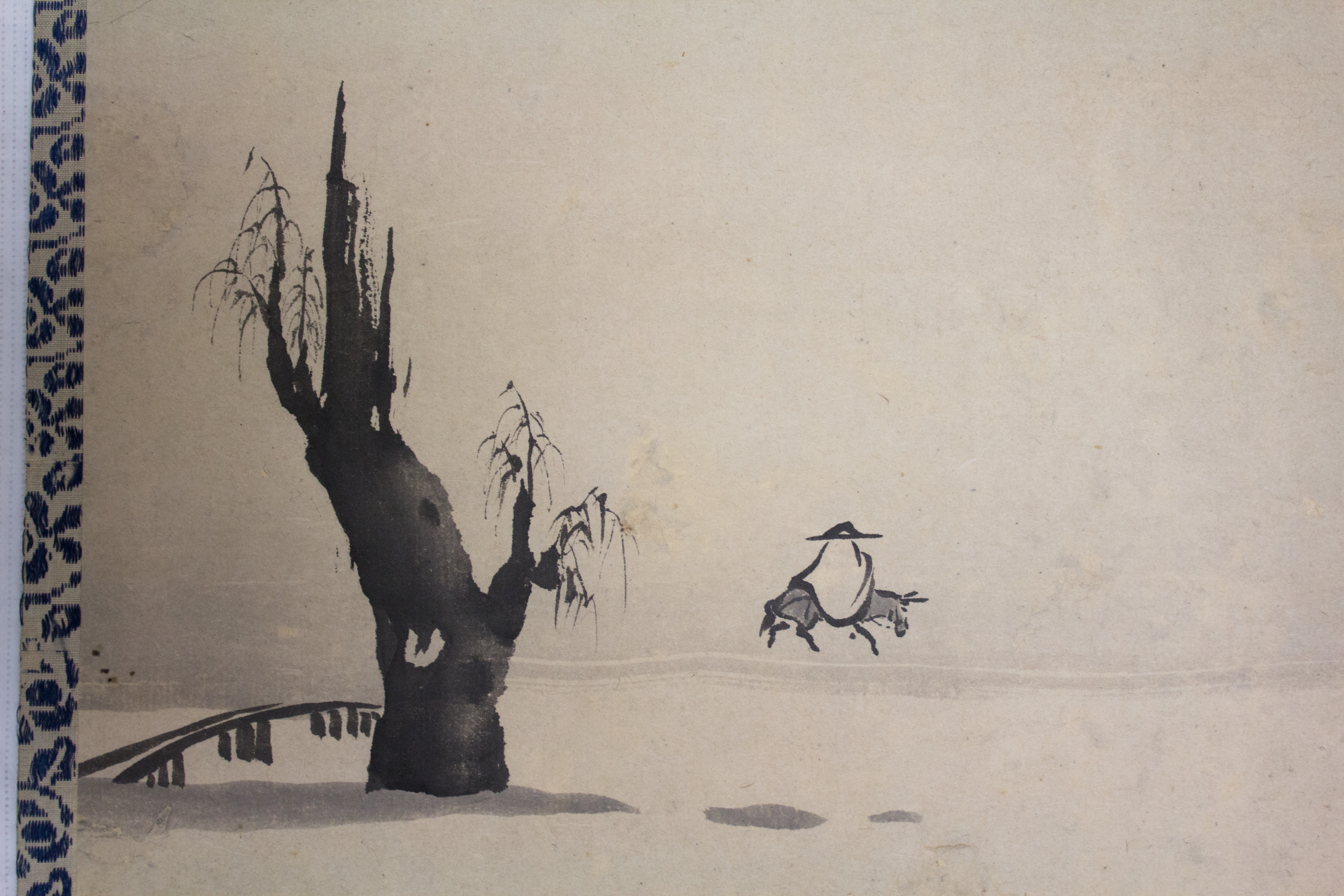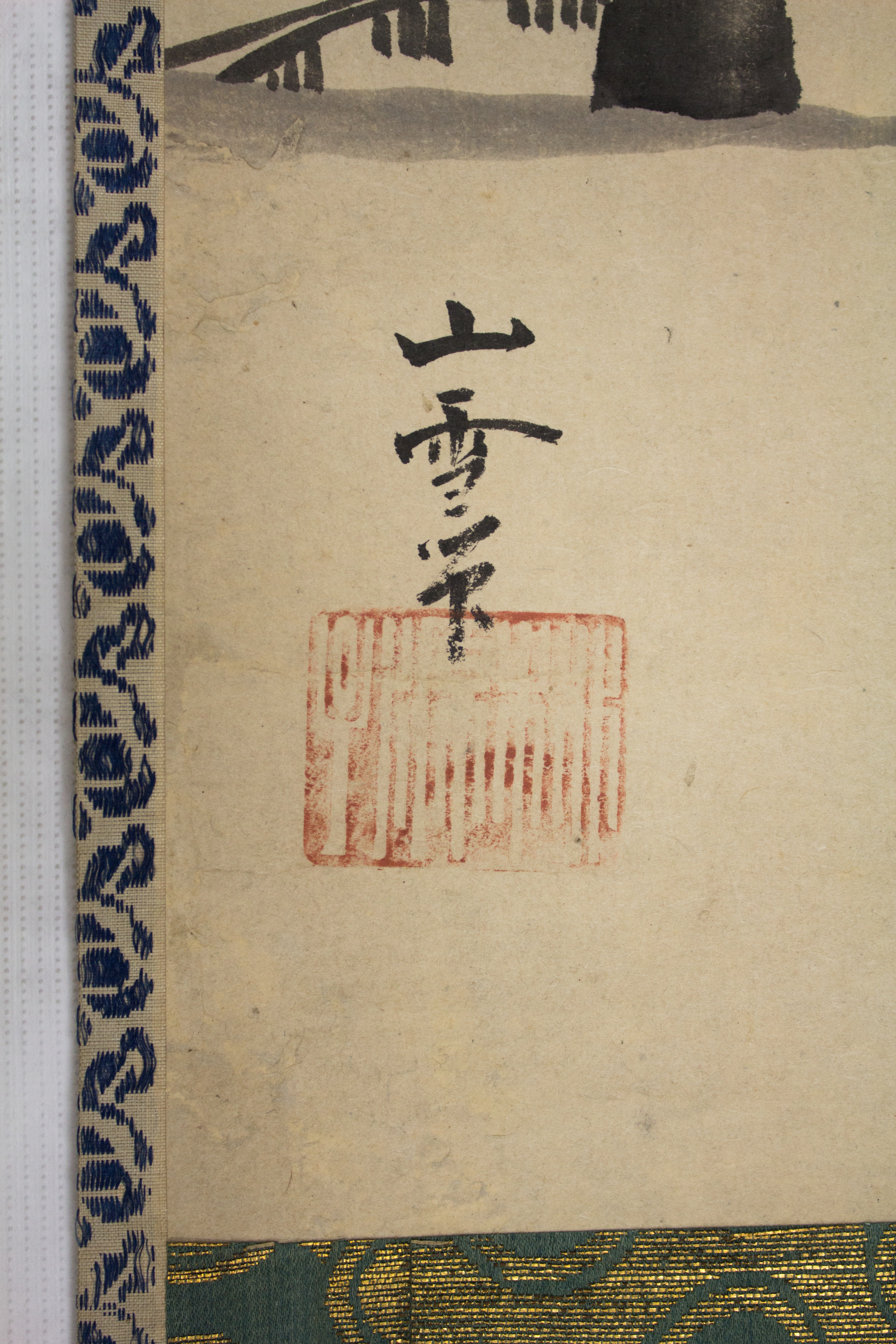Winter Landscape
Kano Sansetsu 狩野山雪 Japanese
Not on view
Wintry Chinese landscapes were a favorite subject of Kano Sansetsu, fitting for a painter whose name literally means “Mountain Snow.” Second-generation head of the Kyoto branch of the Kano school of painters (Kyōgano-ke), Sansetsu is perhaps best known for his beguiling, large-scale paintings in rich color and gold, exemplified by The Met’s Old Plum (1975.268.48a–d), one of his masterworks in this mode. But he was equally at home working in ink monochrome at a smaller scale. In this narrow hanging scroll composition, a lone man wearing a wide-brimmed hat rides his donkey along a riverbank, past a bridge and old tree. Perhaps his destination is the large pavilion seen between the snowy mountains above. Or maybe he is just passing through this desolate snowscape. Both primary motifs—the lone donkey rider with wide-brimmed hat near an old tree and the three snowy peaks—can be found in a number of other paintings by Sansetsu, either as individual compositions or worked into larger scale compositions on folding screens or panels. They are thought to have been inspired by a well-known landscape of the same subject by the thirteenth-century Chinese painter Liang Kai 梁楷 (ca. 1140–ca. 1210) that has been in Japan since at least the fifteenth century.
Due to rights restrictions, this image cannot be enlarged, viewed at full screen, or downloaded.
This artwork is meant to be viewed from right to left. Scroll left to view more.






